STATEHOUSE REPORT | ISSUE 20.26 | JUNE 25, 2021
BIG STORY: State ranks slightly worse on child well-being in new survey
MORE NEWS: Cunningham proposes expanded voting, redistricting reform
LOWCOUNTRY, Ariail: Save the whales
COMMENTARY, Brack: Celebrate Carolina Day with gusto
SPOTLIGHT: S.C. Farm Bureau
MY TURN, E. Brack: NYC’s use of ranked-choice voting is big test
FEEDBACK: Correction: Underreported data
MYSTERY PHOTO: A bonafide contraption
BIG STORY: State ranks slightly worse on child well-being

By Andy Brack, editor and publisher | The environment in which South Carolina’s children grow up has gotten slightly worse over the last five years, according to a review of annual studies that rank child well-being in states across the nation.
South Carolina ranks 41st out of 50 states in child and family well-being, according to the 2021 KidsCount national survey. Five years ago, the state ranked 39th.
The annual survey of data, which is compiled by the Annie E. Casey Foundation and reported in the Palmetto State by the Children’s Trust of South Carolina, combines four data points each for economic well-being, education, health care, and family and community to develop the overall ranking.

When asked about the danger of state and local lawmakers doing nothing to move South Carolina’s children away from the nation’s bottom tier of results, Children’s Trust Director of Research Aditi Srivastaf Bussells said, “When we don’t set up our future generation for success, the success of South Carolina is at stake. When our children can’t flourish, how can we expect our economy or our communities to?”
Steve Skardon, executive director of the Palmetto Project, highlighted the business impact of doing nothing: “When we have an unhealthy South Carolina, we have an unhealthy workforce.”
Indicator: Economic well-being
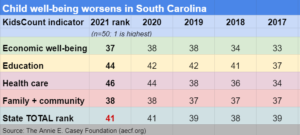 Economic well-being dropped from a middle-tier score of 33 out of 50 states in 2017 to a rank of 37 in 2021. While the overall score went down, the state improved its metrics on each of the indicators that made up the category. That suggests while South Carolina is doing better than it was earlier on improving economic well-being for children, other states are doing even better.
Economic well-being dropped from a middle-tier score of 33 out of 50 states in 2017 to a rank of 37 in 2021. While the overall score went down, the state improved its metrics on each of the indicators that made up the category. That suggests while South Carolina is doing better than it was earlier on improving economic well-being for children, other states are doing even better.
- Children in poverty: In 2021, the state had about 215,000 children living in poverty, compared to 256,000 in 2017.
- Children whose parents lack secure employment: In the 2021 report, an estimated 28 percent of children were in this category, compared to 31 percent five years earlier. The number dropped from 332,000 to 311,000 children.
- Children living in households with a high housing-cost burden: The percentage dropped from 29 percent of children in 2017 (332,000 children) to 26 percent of children (284,000 children) in the 2021 report.
- Teens not in school and not working: Dropped from 21,000 to 19,000 over five years.
Indicator: Education
South Carolina ranked 44th on the KidsCount education category, down from 37th in 2017. There were about 3,000 fewer children ages 3 and 4 not in school (65,000 in 2021 versus 68,000 in 2017). Compared to 2017, indicators showed about the same number of fourth graders (68 percent) were not proficient in reading, the same percentage of eighth graders (71 percent) were not proficient in math, and the same percentage (20 percent) of high schoolers were not graduating on time. Again, the numbers were similar overall, but the state didn’t make enough improvements over the five years to keep from dropping in its education rank.
Indicator: Health
The state’s rank in this category dropped from 39th in 2017 to 41st in 2021.
- Low birthweight babies: The number went up from 5,535 in 2017 to 5,610 in 2021.
- Children without health insurance: South Carolina had 44,000 children without health insurance in 2017, compared to 69,000 in 2021, the report said.
- Child and teen deaths per 100,000: This number also went up — from 373 in 2017 to 391 in 2021.
- Obesity: This category was added between 2017 and 2021, but the new report said child obesity was worse, impacting 36 percent of kids from 10 to 17.
Indicator: Family and community
The state’s KidsCount rank in this category dropped one place to 38th out of 50 states. But individual categories of data showed improvement. Of particular interest was a large dip in children living in high-poverty areas, which dropped from 153,000 in the 2017 report to 101,000 in 2021. Also of note was a major drop in teen births from 4,021 in 2017 to 3,425 in the 2021 report.
Next steps
Experts say more investment in education, health care and other areas is needed for South Carolina’s well-being scores to improve. The same advice comes year after year.

After the pandemic, which the Children’s Trust CEO Sue Williams said caused big setbacks for children, it’s more important than ever to invest.
“We want our state to be a place where all children can thrive, families have what they need to provide stable and loving homes for their children, and communities have resources to wrap around families in times of crisis and hardship,” Williams said in a statement.
Bussells added, “Local and state decision makers need to consider passing policies that provide well-paying jobs for hardworking families, recruit and retain a highly skilled education workforce, provide access to broadband for all, and expand access to affordable health insurance for all families.”
She said county officials could get into the game of doing more to help children, too.
“On a county level, work to make communities safe and free from violence, provide options for affordable housing, fund schools equitably (not the same as equally), provide community-based resources that help young parents with their skills and abilities to enter the workforce and balance the needs of their family.”
- Read the 2021 KidsCount report here.
- Have a comment? Send to feedback@statehousereport.com
Cunningham proposes expanded voting, redistricting reform
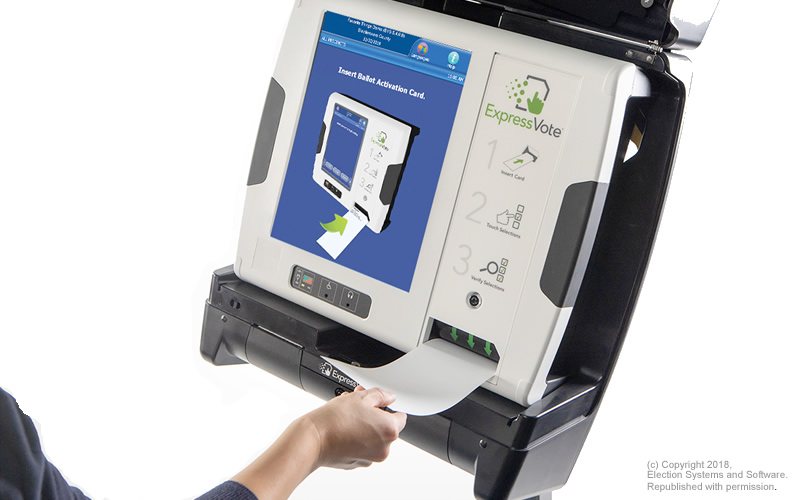
By Sam Spence | Proposals to end straight-ticket voting, expand early voting and reform redistricting are among the changes now being floated by Democratic candidate for governor Joe Cunningham. Meanwhile nationwide, conservatives in Congress and Republican-controlled state legislatures continue ramping up efforts to nix expanded voting procedures that voters got a taste of in 2020.
Cunningham said his 10-point plan would “protect and expand voting rights in South Carolina,” and also includes automatic voter registration at age 18, allowing voters to register and cast a ballot on the same day, 30-days of early voting, an expansion of ID types that can be used to vote and making Election Day a state holiday. The plan would also eliminate witness signatures for mail-in ballots, make ballot drop boxes available in every county and invest in voting machines and personnel to cut down on lines.

“Right now South Carolina has some of the most restrictive and archaic voting laws in the country, and when I’m governor that’s going to change,” Cunningham said in a statement. “In our state, you can vote with your concealed weapons permit but not your college ID. You have to sign an affidavit swearing that you are unable to vote on election day before you can vote early. And South Carolina is one of only six states that still allows straight-ticket voting which is nothing more than state-sponsored partisanship. It’s time for our state to lead on voting rights and this plan will help us do just that.”
Cunningham is in a three-way race for the Democratic nomination for governor, with state Sen. Mia McLeod and activist Gary Votour.
Voting rules are getting attention from Republican lawmakers this year as polls show up to two-thirds of Republican voters believe President Joe Biden’s 2020 victory was illegitimate. Temporary measures enacted in many states to make voting safer during the COVID-19 pandemic were blamed for Donald Trump’s loss. No significant voter fraud has been found.
In Washington, voting reforms that would have affected federal elections and put in safeguards against election fraud were defeated in the U.S. Senate this week. The For the People Act was supported by 50 U.S. senators, but procedural rules allow the minority party to threaten a filibuster and sink proposals that have support of less than 60 senators. Cunningham supported the proposals as a congressman.
Republicans in South Carolina haven’t mounted a significant push to clamp down on voting rules like lawmakers have in Georgia and Texas, though they did challenge the temporary voting measures put in place last year.and ahead of redistricting in the fall and the 2022 midterm elections, huge Republican majorities in the state House, Senate and statewide elected offices set the stage for significant changes even before the next election.
“This legislature has created a system where politicians can’t lose and voters can’t win. They’ll do anything to hold on to power including making it harder to vote — especially for African Americans,” Cunningham told the City Paper. “We’re seeing it all over the country and I’m going to do everything I can to keep it from happening here.”
- Sam Spence is editor of the Charleston City Paper, a sister publication of Statehouse Report. Have a comment? Send to: feedback@statehousereport.com.
Save the whales
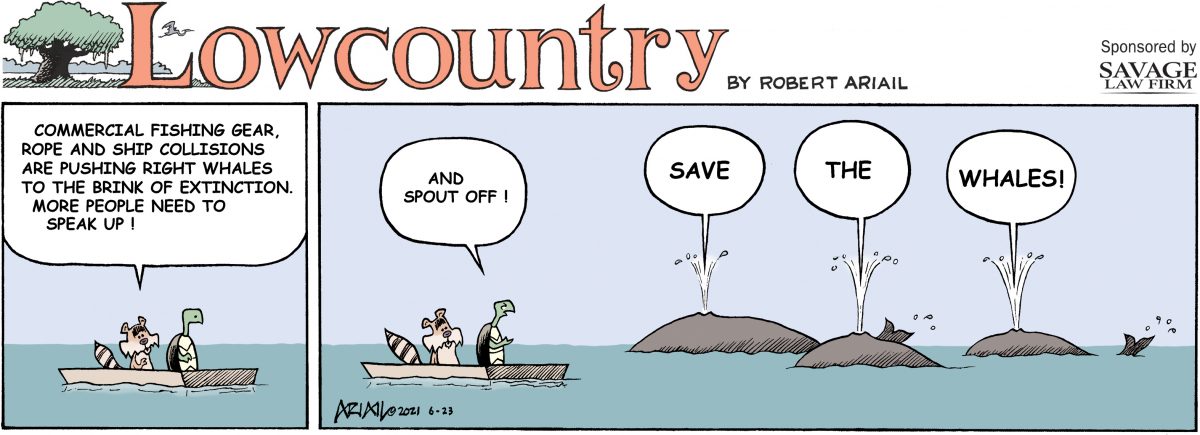
Cartoonist Robert Ariail always has an interesting take on what’s going on in South Carolina. His weekly “Lowcountry” strip is originally drawn for our sister publication, the Charleston City Paper. Love the cartoon? Hate it? What do you think: feedback@statehousereport.com. Check out the Best of Charleston 2021.
Celebrate Carolina Day with gusto

By Andy Brack, editor and publisher | All South Carolinians on Monday should toast the courage and mettle of patriots from 245 years who vanquished the powerful British navy in the Battle of Sullivan’s Island and secured the first major colonial victory in the Revolutionary War.
 It’s a great story of underdogs in an unfinished palmetto log-and-sand fort with 31 cannons who repelled nine man-of-war ships with almost 300 cannons. The victory by South Carolina patriots on June 28, 1776, showed leaders in colonies up and down the east coast that the cause for freedom from Britain’s tyranny was winnable. It inspired them to sign something else important in those times — the Declaration of Independence.
It’s a great story of underdogs in an unfinished palmetto log-and-sand fort with 31 cannons who repelled nine man-of-war ships with almost 300 cannons. The victory by South Carolina patriots on June 28, 1776, showed leaders in colonies up and down the east coast that the cause for freedom from Britain’s tyranny was winnable. It inspired them to sign something else important in those times — the Declaration of Independence.
Colonists started building a fort on Sullivan’s Island in February 1776 after news of plans the British wanted to capture Charleston, then one of the richest ports in the Americas. Taking Charleston, British leaders thought, would split the colonies, take away revenue fueling the patriot cause and help them quell an insurrection.
According to the S.C. Encyclopedia, the fort protecting Charleston harbor was to be square with 500-foot-long walls with a bastion at the corners. Builders placed thousands of palmetto logs in two parallel walls that were 16 feet apart. In between the walls was sand and more sand. By the end of June, only two walls and bastions were complete. Some 400 soldiers were stationed at the unfinished fort. Another 300 were at the north end of the island to keep British marines from crossing Breach Inlet.
 On June 8, the British demanded a surrender, which was rejected and led to British troops landing on what is now Isle of Palms. On June 28, warships advanced on the fort and started firing just before noon; the fort’s guns responded. Soon, three ships tried to sneak between the island and mainland to fire on the unprotected rear of the fort and block reinforcements. But they ran aground. While two later were freed from sandbars, one eventually was set afire.
On June 8, the British demanded a surrender, which was rejected and led to British troops landing on what is now Isle of Palms. On June 28, warships advanced on the fort and started firing just before noon; the fort’s guns responded. Soon, three ships tried to sneak between the island and mainland to fire on the unprotected rear of the fort and block reinforcements. But they ran aground. While two later were freed from sandbars, one eventually was set afire.
The cannonade continued through the evening, but the little fort survived with little damage, in part because of how the interwoven fibers of the palmetto logs, plus the thick berm of sand, absorbed the shock of British volleys. The non-pliable wooden ships, however, weren’t as lucky. Several were damaged in the nine-hour battle and British troops had more than 200 casualties, compared to 40 patriots. It wasn’t long before the Royal Navy withdrew and the unnamed fort was named to honor Col. William Moultrie, its commander. Now, the site is part of Fort Sumter and Fort Moultrie National Historical Park.
Visitors should learn more about the Revolutionary history of the state, rather than focus on the Civil War that some still seem to be fighting. Had it not been for the patriot victory at Sullivan’s Island plus the scores of skirmishes and battles in the Carolinas that stretched the British supply lines, the patriot cause might not have been successful.
Just look at a few names from South Carolina that are familiar to Revolutionary War junkies:
- Henry Laurens, the merchant and slave trader who helped to bankroll revolutionary fervor and who succeeded John Hancock as president of the Second Continental Congress.
- His son, John Laurens, who was a key aide to General George Washington.
- Christopher Gadsden, the organizer best known today for his “Don’t Tread of Me” flag.
- General Francis “Swamp Fox” Marion, whose guerilla tactics kept British and Loyalist forces on constant edge.
- General Thomas “Gamecock” Sumter, another guerilla leader known for furious attacks.
As you lift a glass to these leaders who put all on the line for a new country, let’s try to do a better job in capturing their spirits in the modern day so we can be just as proud of how we’re working to improve education, boost health care, reduce poverty and increase economic opportunity as we are of our history.
- Have a comment? Send to: feedback@statehousereport.com.
S.C. Farm Bureau
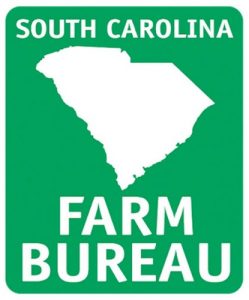 Statehouse Report is provided for free to thousands of subscribers thanks to the generosity of our underwriters. Today we shine a spotlight on our newest underwriter, S.C. Farm Bureau. It is a grassroots, non-profit organization that celebrates and supports family farmers, locally-grown food and rural lands through legislative advocacy, education and community outreach.
Statehouse Report is provided for free to thousands of subscribers thanks to the generosity of our underwriters. Today we shine a spotlight on our newest underwriter, S.C. Farm Bureau. It is a grassroots, non-profit organization that celebrates and supports family farmers, locally-grown food and rural lands through legislative advocacy, education and community outreach.
S.C. Farm Bureau’s alliance of nearly 100,000 members includes everyone from foodies and fishermen to lawyers, restaurateurs, entrepreneurs, community leaders, and of course, farmers. By connecting farmers to the larger community, the organization cultivates understanding about agriculture’s importance to our local economies. The S.C. Farm Bureau explains its mission: “We deepen our collective knowledge of who, where and how food grows. We empower people to make informed choices. We grow mutually-beneficial relationships. And, we ensure the future of the family farms, locally-grown food and the rural South Carolina lands we love.”
- To learn more about S.C. Farm Bureau’s programs, click here.
- To view media and publications, click here
- For policy and legislation, click here.
New York’s use of ranked-choice voting is big test
By Elliott Brack, special to Statehouse Report | There were major political results in New York City this week, as citizens there held a primary to determine who will be the Democratic candidate for mayor. Weak Republican influence in New York poin ts to the eventual Democratic winner as the next mayor. The mayor will officially be decided in their General Election in November.
ts to the eventual Democratic winner as the next mayor. The mayor will officially be decided in their General Election in November.
The New York election is important for a new reason: Tuesday’s primary was the first with the city using “ranked choice voting.” Such a system is innovative. Its best feature is that it eliminates the election having to resort to a second vote, a runoff, to determine the winner. However, it may take two weeks, until all absentee ballots are in and counted, to find out who is to be the Democratic nominee for the post.
The ranked-choice tabulation only kicks in if no candidate gets 50 percent (plus one vote) in the election. (The leading candidate got 31 percent of the vote.) With 13 people seeking to win the New York mayorship, it was almost certain that no candidate would get 50 per cent of the vote, so ranked-choice is being used to pick the winner. (Ranked choice tabulations are computer-controlled and complicated; it may take several more tabulations or rankings to determine the winner.)
In a traditional two-person race, ranked-choice has no application. But in a primary such as in New York with 13 candidates, or similarly, in Georgia last year for the remainder of the term for the Isakson Senate seat, it eliminates a costly runoff.
 Here’s how the ranked choice works. Voters don’t just vote for a single person. They rank their top five choices for the office. When ranked choice counting reveals no majority winner, counting begins anew. The candidate in last place is eliminated. All ballots cast for that eliminated candidate are then reallocated to the No. 2 choices of those voters. The votes are then re-tallied and the candidate in last place is eliminated again. The process repeats until there are two candidates left, and the one with more votes wins.
Here’s how the ranked choice works. Voters don’t just vote for a single person. They rank their top five choices for the office. When ranked choice counting reveals no majority winner, counting begins anew. The candidate in last place is eliminated. All ballots cast for that eliminated candidate are then reallocated to the No. 2 choices of those voters. The votes are then re-tallied and the candidate in last place is eliminated again. The process repeats until there are two candidates left, and the one with more votes wins.
The major benefit, besides elimination of a runoff, is that the winner comes from support of a broad cross section of the voters. Candidates must therefore appeal to this larger audience, instead of relying on a narrow base of voters.
It also allows the people to vote (“support”) more than one candidate, basically selecting their choices in order according to which candidates appeal to them. Most voters often like more than one candidate, and this allows them to show that support, in ranking their top choice. By ranking, you can still have a voice in choosing the winner, though your top candidates may not be in the running.
The states of Maine and Alaska have used ranked choice voting, and some cities, including San Francisco and Minneapolis, have adopted this system. This year, Salt Lake City and 22 other Utah cities will use ranked-choice voting in the city elections in the fall.
Ranked choice is relatively new. But it’s been working in Australia, Ireland, New Zealand, Malta, Northern Ireland and Scotland. We’ll see if more of the United States considers this method of election.
The New York City primary voting was the largest single use of the ranked choice system. It could prove useful to be an effort which could be extended to other cities and states to improve elections.
- Longtime Georgia journalist Elliott Brack is editor and publisher of GwinnettForum.com, where this commentary first appeared. Have a comment? Send to: feedback@statehousereport.com.
Correction: Underreported data
To the editor:
![]() Thank you for reporting on S.C.’s litter issues in the recent Statehouse Report. It is an environmental crisis that will take many working together to combat.
Thank you for reporting on S.C.’s litter issues in the recent Statehouse Report. It is an environmental crisis that will take many working together to combat.
We appreciate the inclusion of the South Carolina Aquarium’s Litter-Free Digital Journal, as this data has been important in better understanding the most problematic types of debris littering our state and enabled solutions based conversations. Unfortunately, the data reported is considerably lower than the actual numbers and doesn’t provide an accurate picture of growth in litter data or the impact. Last year, we hit a major data milestone of a million debris items being documented and have now greatly surpassed that number.
Here is the breakdown of debris items entered into LFDJ since 2016:
- 2016: 30,239
- 2017: 83,859
- 2018: 179,271
- 2019: 334, 835
- 2020: 508,232
- 2021 to date: 232,186
— Kelly Thorvalson, conservation programs manager, S.C. Aquarium, Charleston, S.C.
EDITOR’S NOTE: Thank you for drawing this to our attention. We’ve adjusted the reporter’s story and apologize for the error.
Send us your thoughts, but also provide contact info
We receive a few comments a week and look forward to publishing. But often we can’t because we can’t verify the identity of the writer.
To be published, you’ve got to provide us with contact information so we can verify your letters. Verified letters to the editor are published weekly. We reserve the right to edit for length and clarity. Comments are limited to 250 words or less. Please include your name and contact information.
- Send your letters or comments to: feedback@statehousereport.com
A bonafide contraption
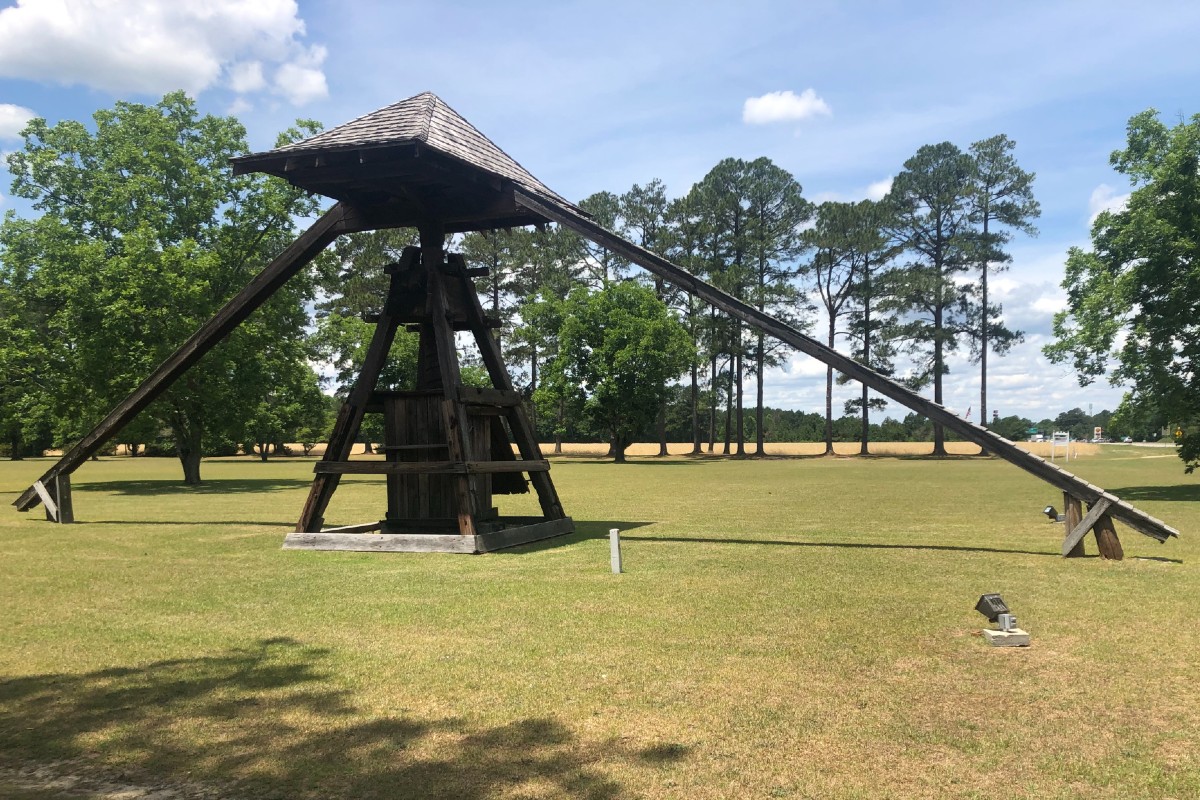
Well, here’s something you don’t see every day. What in the world is it and where is it? Send your guess to feedback@statehousereport.com — and remember to include your name, home city and contact information.
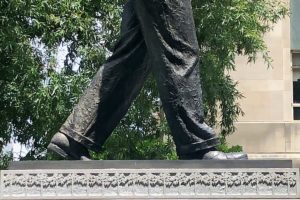 Last week’s mystery, “Take a step in these shoes,” showed the walking feet from a bronze statue of the late U.S. Sen. Strom Thurmond located at the Statehouse complex in Columbia.
Last week’s mystery, “Take a step in these shoes,” showed the walking feet from a bronze statue of the late U.S. Sen. Strom Thurmond located at the Statehouse complex in Columbia.
Congratulations to everyone — including several new sleuths — who recognized those feet: Karen Ingram, Mary “Biscuit Queen” Greene, John Hart, Anthony Lofton, Elizabeth Jones, Bud Ferillo and Jay Altman, all of Columbia; Tim Todd and Faith Line, both of Anderson; Kevin Mertens of Greenville; Dave Wilson of Lexington; George Graf of Palmyra, Va.; Allan Peel of San Antonio, Texas; former state Sen. Phil Leventis of Sumter; Penny Forrester of Tallahassee, Fla.;; and Jacie Godfrey and Barry Wingard, both of Florence.
Peel shared: “ Designed by William Behrends, the memorial was dedicated on December 4, 1999 while Thurmond was still alive, making it the second monument to a living person on the SC State House grounds (the first was for James F. Byrnes).”
- Send us a mystery. If you have a photo that you believe will stump readers, send it along (but make sure to tell us what it is because it may stump us too!) Send to: feedback@statehousereport.com and mark it as a photo submission. Thanks.
 ORDER NOW: Copies are in Lowcountry-area bookstores now, but if you can’t swing by, you can order a copy online today.
ORDER NOW: Copies are in Lowcountry-area bookstores now, but if you can’t swing by, you can order a copy online today.
ABOUT STATEHOUSE REPORT
Statehouse Report, founded in 2001 as a weekly legislative forecast that informs readers about what is going to happen in South Carolina politics and policy, is provided to you at no charge every Friday.
Meet our team
- Editor and publisher: Andy Brack, 843.670.3996
- Special correspondent: Lindsay Street
Donate today
We’re proud to offer Statehouse Report for free. For more than a dozen years, we’ve been the go-to place for insightful independent policy and political news and views in the Palmetto State. And we love it as much as you do.
But now, we can use your help. If you’ve been thinking of contributing to Statehouse Report over the years, now would be a great time to contribute as we deal with the crisis. In advance, thank you.
Buy the book
Now you can get a copy of editor and publisher Andy Brack’s We Can Do Better, South Carolina! ($14.99) as a paperback or as a Kindle book ($7.99). . The book of essays offers incisive commentaries by editor and publisher Andy Brack on the American South, the common good, vexing problems for the Palmetto State and interesting South Carolina leaders.
More
- Mailing address: Send inquiries by mail to: P.O. Box 21942, Charleston, SC 29413
- Subscriptions are free: Click to subscribe.
- We hope you’ll keep receiving the great news and information from Statehouse Report, but if you need to unsubscribe, go to the bottom of the weekly email issue and follow the instructions.
- Read our sister publications: Charleston City Paper (every Wednesday) | Charleston Currents (every Monday).
- © 2021, Statehouse Report, a publication of City Paper Publishing, LLC. All rights reserved.



Pingback: Statehouse Report – NEW for 6/25: On child well-being, voting reform, Carolina Day, more – Statehouse Report – Holiday Helper